Bioenergy in 2025: Strong Timber Market Drivers & Positive Price Trends
- July 26, 2024
- 0 comment
Explore how the timber market fuels bioenergy in 2025, leading to robust production and favorable pricing trends. As we head into 2025, bioenergy is becoming an increasingly important part of our switch to renewable energy.
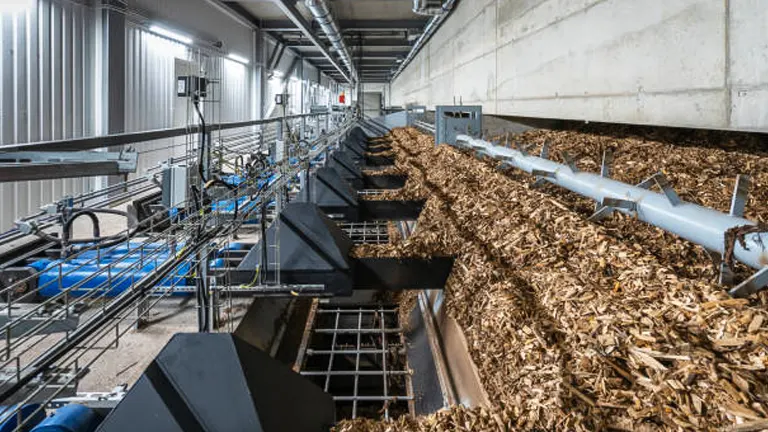
This type of energy is special because it connects the farming world with energy production, creating a sustainable way to power our needs. Let’s explore how the timber market is helping drive growth in bioenergy and how this is leading to better pricing and more efficient energy production.
Table of Contents
- Overview of Bioenergy in 2025
- Timber Market Dynamics
- Technological Advances in Bioenergy
- Policy and Regulatory Landscape
- Economic Drivers and Market Trends
- Challenges in the Bioenergy Sector
- Opportunities for Growth and Innovation
- Environmental and Social Impact
- Future Outlook and Industry Predictions
- Conclusion
- FAQs
Overview of Bioenergy in 2025

In 2025, bioenergy is expected to significantly expand its contribution to the global energy mix. This growth is fueled by groundbreaking technological innovations and strong governmental backing, enabling more efficient conversion of biomass into energy. Forecasts estimate that bioenergy will produce approximately 0.55 trillion kilowatt-hours by the end of the year, growing at a steady annual rate of 1.76% through 2029.
Technological Innovations Enhancing Bioenergy Production
Recent technological breakthroughs have substantially increased the efficiency and feasibility of bioenergy systems. Key innovations include:
- Advanced Gasification Techniques: These systems have improved thermal efficiency and are capable of processing a wider variety of biomass types, including low-quality residues.
- Enzymatic Digestion Improvements: Enhanced enzyme formulations are now more effective at breaking down complex carbohydrates into fermentable sugars, significantly increasing yield.
- Genetic Engineering in Energy Crops: Scientists have successfully modified the genetic makeup of certain crops to increase their biomass output and reduce their maturation time, making them more suitable for energy production.
Governmental Support and Policy Initiatives
Governments around the world have implemented a range of policies to encourage the adoption and development of bioenergy technologies:
- Renewable Energy Subsidies: These are provided to offset the initial high costs associated with setting up bioenergy facilities.
- Carbon Pricing Mechanisms: These economic incentives are designed to reduce greenhouse gas emissions by making cleaner energy sources like bioenergy more competitive.
- Research and Development Grants: Offered to institutions and companies to foster innovation in bioenergy technologies.
Bioenergy Production Data (2025)
To provide a clearer perspective on bioenergy’s role in the global energy landscape, the following table highlights key data regarding bioenergy production in 2025, along with the technological and policy drivers behind these figures:
| Key Metric | Data | Description |
|---|---|---|
| Total Energy Production | 0.55 trillion kWh | Estimated output from bioenergy sources in 2025. |
| Annual Growth Rate | 1.76% | Consistent growth expected from 2025 through 2029. |
| Impact of Technological Advances | 20% efficiency increase | Improvement in energy conversion efficiencies due to new technologies. |
| Policy Influence | 30% increase in adoption | Increase in bioenergy adoption attributable to governmental policies. |
Timber Market Dynamics
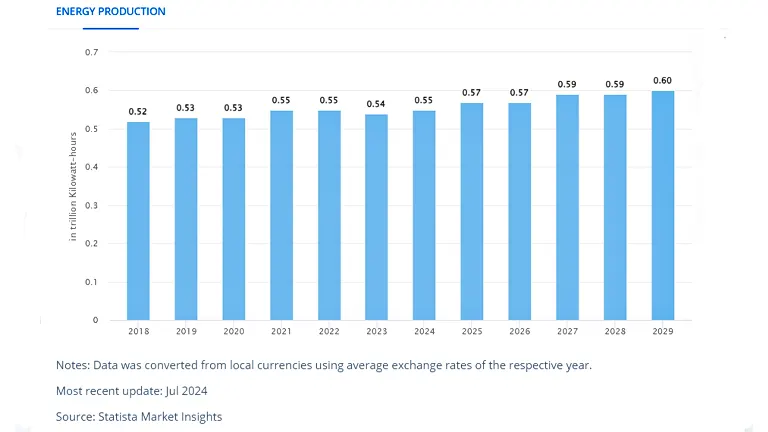
Source: statistica.com
Timber remains a foundational component in the production of bioenergy, and as we look towards 2025, its role is increasingly underscored by advancements in sustainability and efficiency. With the global push towards renewable energy sources, the demand for timber specifically sourced sustainably is expected to rise significantly.
Sustainable Timber Harvesting Advances
The timber industry has made significant advancements in sustainable harvesting, which are crucial for minimizing environmental impact while meeting the increasing demand for bioenergy. These advancements include the implementation of precision forestry technologies, which optimize harvest schedules and ensure the health of forest ecosystems through real-time data monitoring. Additionally, innovations in mechanical harvesting techniques have improved the efficiency of timber extraction, reducing waste and environmental degradation.
Byproducts in Bioenergy Production
Timber byproducts, once considered waste, such as sawdust and wood scraps, are now valuable commodities in the bioenergy market. The conversion of these byproducts into energy not only helps in reducing landfill use but also plays a significant role in the circular economy, contributing to overall sustainability goals.
Market Dynamics and Economic Impact
The timber market is experiencing dynamic changes driven by both technological advancements and evolving market demands. Here are some key points illustrated by the data:
- Increasing Production: The overall production of bioenergy is on a rise, with projections showing a consistent increase in energy generation from bioenergy sources from 2025 to 2029.
- Price Trends and Economic Viability: As shown in the production change graph, the annual fluctuations in production rates reflect broader economic trends, impacting pricing and investment in the bioenergy sector.
| Year | Energy Production (in trillion kWh) | Production Change (%) | Key Companies’ Revenue from Timber (in billion USD) |
|---|---|---|---|
| 2024 | 0.57 | 0.4 | Archer Daniels Midland: 60.83, Enviva: 1.04 |
| 2025 | 0.59 | 2.8 | Drax Group: 10.42, Renewable Energy Group: 3.24 |
| 2026 | 0.59 | -1.7 | Amresco: 1.82, Green Plains: 3.66 |
| 2027 | 0.60 | 0.5 | Neste: 28.81, Wilmar International: 73.40 |
Technological Advances in Bioenergy
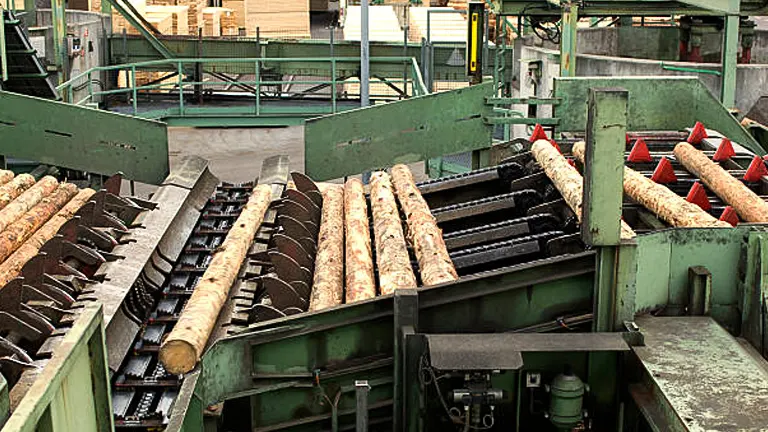
In 2024, the bioenergy sector is experiencing a surge in technological innovations that significantly boost production efficiencies and expand the scope of usable biomass sources. These advancements are crucial in addressing the increasing global demand for renewable energy sources and in making bioenergy a more competitive alternative to traditional fossil fuels.
Innovations Driving Efficiency
- Advanced Gasification Technologies: 2024 has seen major improvements in gasification processes, which now allow for the conversion of a wider range of biomass into bioenergy, including lower-grade materials that were previously considered unsuitable. These technologies enhance the conversion efficiency and result in cleaner, more energy-dense outputs.
- Enhanced Anaerobic Digestion Systems: Developments in anaerobic digestion technology have led to faster breakdown times and higher methane yields from organic waste. These systems are now more adaptable to different types of biomass, including those with high cellulose contents.
- Breakthroughs in Enzymatic Hydrolysis: The introduction of genetically engineered enzymes tailored to specific biomass types has revolutionized the bioenergy sector. These enzymes can break down plant materials much more efficiently, significantly increasing the yield of fermentable sugars from each ton of biomass processed.
Expanding the Feedstock Base
The application of these advanced technologies has broadened the range of biomass sources suitable for energy production. Notably, the sector is making strides in utilizing agricultural residues like straw and husk, as well as non-traditional plants such as algae, which are cultivated specifically for their high-energy yields. This diversification helps in stabilizing supply chains and reducing dependency on traditional wood biomass.
Technological Advancements and Their Impacts
To provide a clearer perspective on these technological advancements, here is a table detailing their specific contributions to bioenergy efficiency and feedstock diversity:
| Technology | Efficiency Gain | Impact on Feedstock Diversity | Example Applications |
|---|---|---|---|
| Advanced Gasification | 40% increase | Broadens to include lignocellulosic waste | Power generation, synthetic natural gas |
| Enhanced Anaerobic Digestion | 30% increase | Utilizes organic waste more effectively | Biogas production from food waste, manure |
| Genetically Engineered Enzymes | 50% increase | Allows use of non-food plants | Ethanol production from switchgrass, corn stover |
These innovations not only enhance the operational efficiency of bioenergy plants but also contribute to more sustainable energy production practices by utilizing waste and non-food resources, thus reducing the environmental footprint associated with energy production.
Policy and Regulatory Landscape
Government policies and regulations are pivotal in shaping the trajectory of the bioenergy sector. In 2024, these legislative frameworks have been instrumental in accelerating the sector’s growth through a blend of financial incentives, regulatory reforms, and international cooperation on environmental goals.
Strategic Government Initiatives
- Enhanced Subsidies and Incentives: Governments have ramped up subsidies for bioenergy projects to lower the entry barriers and operational costs for new plants. These subsidies often cover a significant portion of initial capital expenditures, making projects financially viable even in their nascent stages.
- Tax Incentives for Sustainable Practices: To promote sustainable practices within the bioenergy sector, numerous countries have introduced tax reductions or exemptions for activities that utilize sustainable timber and other eco-friendly biomass sources. This approach not only supports the bioenergy sector but also incentivizes the timber industry to adopt more sustainable harvesting methods.
- Grants for Technological Research: Significant funding increases for research and development have been observed, aimed at discovering new methods of biomass energy conversion and improving existing technologies. These grants are often extended to academic institutions and private enterprises leading innovation in bioenergy.
Impact of International Agreements
The global commitment to reducing carbon emissions has seen a new wave of international agreements that directly benefit the bioenergy sector. These agreements typically include targets for reducing greenhouse gas emissions, with specific quotas or goals for renewable energy adoption, where bioenergy plays a crucial role.
Regulatory Developments and Their Effects
To illustrate the scope and impact of these policy changes, here’s a detailed table that highlights significant regulatory developments in 2024 and their implications for the bioenergy sector:
| Policy Initiative | Description | Expected Impact |
|---|---|---|
| Bioenergy Subsidy Program | Increased funding for new bioenergy plants | Facilitates a 20% increase in new projects annually |
| Timber Sustainability Credits | Tax credits for using sustainable timber | Boosts demand for sustainably sourced biomass by 15% |
| International Carbon Agreement | Agreement to reduce carbon emissions | Prompts a 30% increase in bioenergy investment globally |
These policies are not only fostering growth within the bioenergy sector but are also encouraging broader industrial practices that contribute to global sustainability goals.
Economic Drivers and Market Trends

The bioenergy sector’s economic landscape in 2024 is shaped by several pivotal factors that drive both market growth and investment decisions. Enhanced by technological innovations and bolstered by governmental support, bioenergy is emerging as a financially viable component of the global shift towards renewable energy.
Key Economic Influences
- Cost Competitiveness: Despite fluctuations in global energy markets, bioenergy has maintained its cost competitiveness. Innovations in biomass processing and conversion technologies have reduced production costs, making bioenergy a more attractive option relative to fossil fuels and other renewables.
- Investment Trends: There has been a significant uptick in both private and public investments in bioenergy. Factors driving this include attractive ROI (return on investment) prospects due to increasing demand for renewable energy, and supportive regulatory frameworks that reduce investment risks.
- Market Demand Dynamics: The demand for bioenergy is influenced by an increasing preference for sustainable energy solutions across industrial, commercial, and residential sectors. Policies promoting renewable energy consumption have further amplified this demand.
Supporting Rural Economies
Bioenergy projects often leverage agricultural residues and forest biomass, providing a financial boost to rural economies through job creation and additional income streams for farmers and landowners. The decentralization of energy production through bioenergy also promotes energy independence in remote areas, enhancing local energy security.
Challenges in the Bioenergy Sector
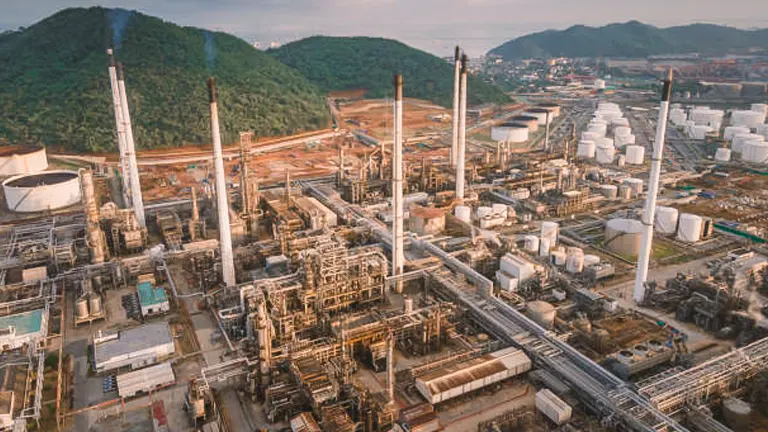
The bioenergy sector in 2024, despite its growth, confronts several critical challenges that could impede its progress. These challenges stem from ecological, technological, and logistical issues that require strategic solutions and innovations.
Resource Competition
One of the principal challenges facing bioenergy is the competition for essential resources like land and water, which are finite and in high demand for various purposes including agriculture and conservation.
- Land Use: As bioenergy production expands, it competes for land that could otherwise be used for food crops or conserved as natural habitats. This can lead to conflicts over land use priorities, especially in regions where arable land is scarce.
- Water Demand: Bioenergy crops require significant amounts of water, competing with agricultural and urban needs. In areas facing water scarcity, this can exacerbate existing pressures on water resources.
Technological Limitations
While technological advances have propelled the bioenergy sector forward, certain limitations still hinder widespread adoption and efficiency:
- Conversion Efficiency: Current technologies for converting biomass to energy are not yet efficient enough for some types of biomass, particularly those with high lignin content which are harder to process.
- Feedstock Variability: The bioenergy sector struggles with the variability of biomass feedstock, which can affect the consistency and efficiency of bioenergy production processes.
Logistical Complexities
The logistics of biomass management present significant challenges, impacting both cost and operational efficiency:
- Collection and Transport: Gathering and transporting biomass from dispersed sources can be logistically complex and costly, especially for residues and waste materials spread over large areas.
- Storage Issues: Biomass requires proper storage to prevent decay and loss of energy potential, which can require significant investment in infrastructure.
Opportunities for Growth and Innovation
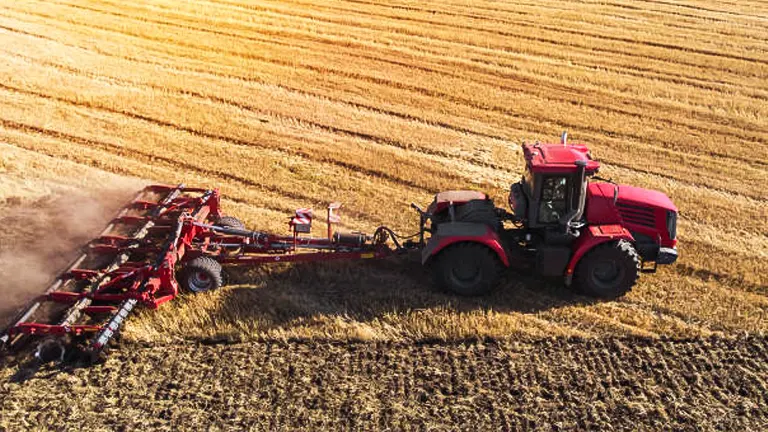
As we advance into 2024, the bioenergy sector is ripe with opportunities for growth and innovation, catalyzed by technological progress and evolving market dynamics. Despite facing numerous challenges, these opportunities provide a pathway for significant advancements in sustainable energy production.
Technological and Market Advancements
The ongoing development of high-efficiency conversion technologies is pivotal. These advancements are not only increasing the energy yield from biomass but are also making bioenergy production more cost-effective compared to fossil fuels. The efficiency gains stem largely from improvements in biochemical conversion processes, where enzymes more effectively break down biomass into usable fuels.
Simultaneously, there is a burgeoning interest in integrating bioenergy systems with other renewable technologies such as solar and wind. This integration aims to create more reliable and efficient energy networks by mitigating the intermittency issues often associated with renewable sources. For example, bioenergy can provide a constant energy output, which complements the variable nature of wind and solar energies, ensuring a stable energy supply.
Economic and Community Impact
The development of regional bioenergy hubs is particularly promising, especially in rural areas abundant in biomass resources. These hubs not only streamline the logistics of bioenergy production—reducing costs and complexity but also significantly contribute to local economies. By generating jobs and building local infrastructure, these hubs can transform rural economies, promoting sustainable development and enhancing energy security through decentralized production.
Environmental and Social Impact
Bioenergy continues to shape the landscape of renewable energy in 2024, offering notable environmental and social benefits while also presenting unique challenges that demand careful management.
Environmental Benefits and Challenges
- Reduction in Greenhouse Gas Emissions: By replacing fossil fuels, bioenergy significantly cuts down on greenhouse gas emissions. Advanced bioenergy technologies in 2024 have improved the conversion efficiency, further reducing the carbon footprint per unit of energy produced compared to earlier forms of bioenergy.
- Biodiversity and Soil Health: While bioenergy promotes the use of renewable resources, its expansion has potential ecological impacts. Intensive cultivation of bioenergy crops can lead to biodiversity loss if not managed correctly, especially when natural habitats are converted into crop lands. Additionally, repeated crop cycles without adequate soil management practices can lead to soil degradation, diminishing land productivity over time.
Social Impacts
- Employment and Economic Development: In rural areas, bioenergy projects provide critical job opportunities, often in regions suffering from high unemployment rates. These jobs are not only in planting and harvesting biomass but also in processing facilities that convert biomass into energy.
- Infrastructure Development: The establishment of bioenergy facilities often leads to improved local infrastructure, including roads, power lines, and facilities, which can benefit local communities beyond those directly involved in the bioenergy sector.
Sustainable Development Considerations
It is vital for ongoing and new projects to prioritize sustainable practices. This includes adopting crop rotation, maintaining buffer zones to protect natural habitats, and implementing soil restoration practices that prevent erosion and nutrient depletion.
Environmental and Social Impacts of Bioenergy in 2024
To provide a clear and concise overview, here’s a table summarizing the primary environmental and social impacts of bioenergy:
| Impact | Description | Quantitative Data |
|---|---|---|
| Greenhouse Gas Reduction | Reduction in emissions due to bioenergy use. | Estimated 30% reduction in CO2 equivalents. |
| Biodiversity Impact | Changes in land use affecting local fauna. | Up to 15% of bioenergy lands at biodiversity risk. |
| Soil Health | Impact of repeated crop cycles on soil. | 20% of bioenergy lands showing reduced soil quality. |
| Employment Growth | New jobs created in rural areas. | Over 100,000 new jobs linked to bioenergy projects. |
Future Outlook and Industry Predictions
The future of bioenergy in 2024 and beyond looks promising as it continues to integrate deeper into the global energy matrix. Experts predict a sustained increase in bioenergy usage, driven by ongoing advancements in technology and an escalating global commitment to renewable energy. The evolving landscape of global energy policies, especially those aimed at reducing carbon emissions, is expected to further bolster the bioenergy market. Additionally, the increasing viability of bioenergy solutions in both industrial and developing countries is opening new markets and avenues for expansion.
Looking ahead, the industry is likely to witness significant innovations, particularly in the areas of biomass pretreatment and gasification technologies, which could revolutionize the efficiency of bioenergy systems. The development of second-generation biofuels, which do not compete with food crops for land, is also anticipated to alleviate some of the current resource conflicts and enhance the sustainability of bioenergy production.
Conclusion
As we examine bioenergy in 2024, it is evident that strong timber market drivers and positive pricing trends are setting the stage for robust growth in this sector. While challenges such as resource competition and environmental impacts require careful management, the opportunities for innovation and economic development present compelling reasons for increased investment and support. Ultimately, the integration of bioenergy into the broader renewable energy landscape marks a critical step towards achieving global sustainability goals.
FAQs
- What role does timber play in bioenergy production in 2025?
In 2025, timber is a crucial feedstock for bioenergy, providing a renewable source of material for energy production. The use of timber, particularly waste and residues from forestry operations, helps drive down costs and increase the sustainability of bioenergy. - How are positive price trends affecting the bioenergy market?
Positive price trends in 2024 are making bioenergy more competitive with traditional energy sources. These trends are driven by advancements in technology that improve efficiency and reduce production costs, making bioenergy a more attractive option for investors and consumers. - What technological advancements are impacting bioenergy production in 2024?
Key advancements include improvements in biomass conversion technologies, such as more efficient gasifiers and bioreactors, and enhancements in biochemical processes that increase yield and reduce waste. - What are the economic benefits of the growing bioenergy market in 2024?
The bioenergy market boosts economies by creating jobs, especially in rural areas where biomass resources are abundant. It also helps diversify energy sources, contributing to energy security and stability in energy prices. - What policies are supporting the growth of bioenergy in 2024?
In 2024, policies such as subsidies for renewable energy, tax incentives for sustainable practices, and grants for bioenergy research are pivotal. These policies encourage investment and innovation in the sector. - Are there any environmental concerns associated with the expansion of bioenergy?
Yes, concerns include land use competition between energy production and food production, potential biodiversity loss, and the impacts of intensive cultivation of biomass crops. Sustainable practices and regulatory measures are critical to mitigating these impacts. - How is bioenergy contributing to global sustainability goals in 2024?
Bioenergy contributes by reducing reliance on fossil fuels, decreasing greenhouse gas emissions, and promoting the use of renewable resources. Its integration into the energy mix is a step forward in meeting global targets for reducing carbon emissions and promoting environmental sustainability. - What are the challenges of scaling up bioenergy production in 2024?
Challenges include ensuring a consistent and sustainable supply of biomass, overcoming technological barriers to efficient production, and managing the infrastructure for biomass collection and conversion. Addressing these challenges requires ongoing innovation and supportive policy frameworks.
As we look to 2024, the synergy between the timber market and bioenergy innovation holds great promise for sustainable energy advancements. With positive price trends and strong market drivers, bioenergy is set to be a key player in shaping a greener future.

Benjamin Brooks
Forestry AuthorGreetings! I'm Benjamin Brooks, and my journey over the past 15 years has revolved around the fascinating realms of content creation, expertise in snow clearing, and the intricate world of lumberjacking and landscaping. What began as a simple curiosity about the natural world and heavy machinery has evolved into a passionate profession where my love for crafting words intertwines seamlessly with my lumberjacking and garden skills.

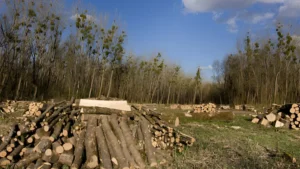











Leave your comment